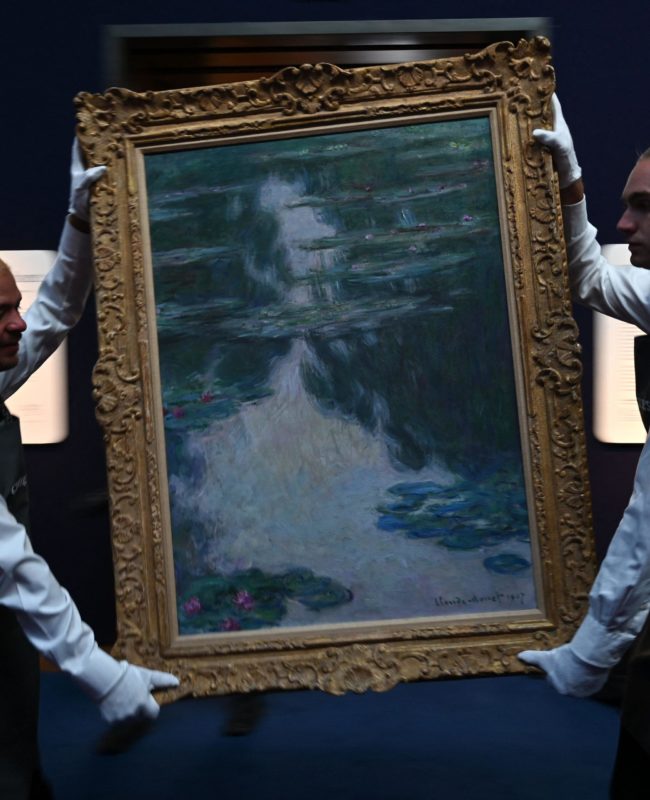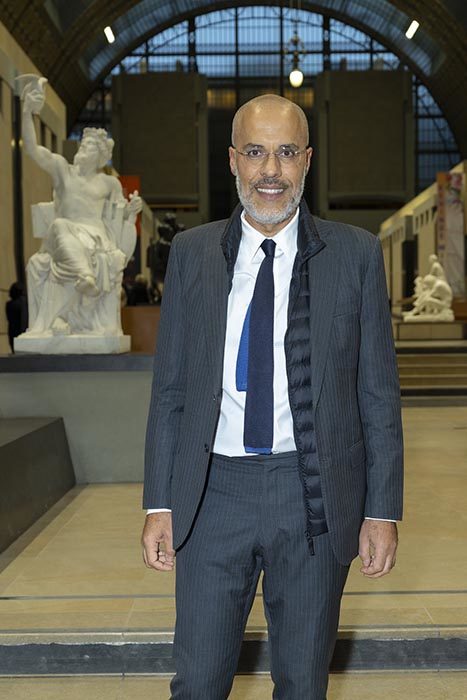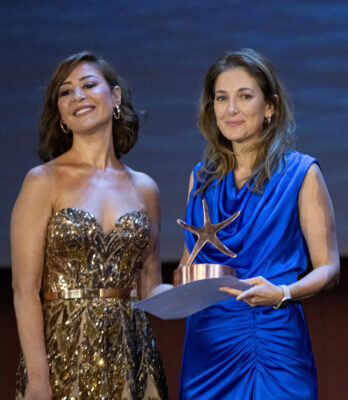
Art
Paris is Burning
Could Paris reclaim the European art capital crown from London for the first time in decades?
“There’s a new effervescence,” says Guillaume Piens, director of the Art Paris fair, of the French capital’s art scene these days. “When you see the number and rhythm of new exhibits, galleries, museums, renovated spaces, and artist residencies, it’s clear. Good luck trying to keep up.”
On the eve of the first-ever Paris+ by Art Basel, signs of the city’s renewal are indeed partout. Could London be losing some of its megawatt art power to Paris?
While the UK’s market remains significantly stronger (dropping 3% to represent 17% of the global art market in 2021, versus 7% for France), Paris is on the rise like it hasn’t been in decades. Word on the street was that some collectors were even planning to skip this year’s London Frieze Week (on now) in favor of the highly anticipated Art Basel franchise that will unveil its first Paris foray to VIPs next Wednesday, October 19, in the 16-month-old Grand Palais Éphémère facing the Eiffel Tower.
The list of international dealers who’ve set up shop in the French capital since Brexit is telling—and shows no signs of abating. Larry Gagosian added a third Paris outpost to his repertoire in October 2021; Hauser & Wirth announced it would open its first in spring 2023; other recent high-profile arrivals include David Zwirner, White Cube, Mariane Ibrahim, and Lévy Gorvy, to name a few.
While most galleries with London addresses aren’t turning their backs completely on the UK, Britain’s exit from the EU, which officially went into effect on January 31, 2020, has shown the value of having a foothold on the European continent, too. Before the split, import taxes weren’t applied to artworks shipped between the UK and the rest of Europe. As such: Non-EU countries, which accounted for 80% of the country’s pre-Brexit art market value, would ship works to the UK, take advantage of its low 5% import tax, then send the works on to collectors elsewhere in Europe at no extra charge.
Brexit effectively ended this duty-free arrangement, making Paris a more enticing European gateway for wealthy collectors looking to move high-priced works of art within the continent. As art lawyer Pierre Valentin recently explained, “The obligation to pay import VAT when moving art from the EU to the UK and the additional paperwork are considerable deterrents,” adding: “Many European collectors have [also] left the UK.”


But while Piens and others certainly credit the UK’s exit from the EU as a major Paris art scene “accelerator,” many say things started to shift back in the 2010s—well before Brexit.
Piens recalls how when London Frieze first burst onto the scene in 2003, stomachs dropped in the Paris art world. “We all looked at each other, and thought: that’s it, Paris has lost its hand,” he says. But in the 2010s, local power brokers started rolling up their sleeves, ending years of detente between the two cities. Algerian-born French gallerist Kamel Mennour, for one, remembers how he and colleagues on the FIAC art fair selection committee “began to fight against Frieze,” with fair director Jennifer Flay and French gallerist Chantal Crousel pulling strings to attract top-notch galleries to Paris. “It was an incredible moment of emergence. We could feel it was not the best yet, but it could be, with a little time.”
Just about everyone agrees that the splashy openings of the Fondation Louis Vuitton in 2014 and the Bourse de Commerce in 2021, built to showcase priceless works from the massive private collections of French billionaire art tycoons Bernard Arnaud and François Pinault, respectively, were other critical “game-changers.” In between, a new gallery cluster has mushroomed in the Matignon district of the 8th arrondissement. And big new projects are yet to come, like the Fondation Cartier’s anticipated move into the Louvre des Antiquaires space in 2025, following a soup-to-nuts renovation by Jean Nouvel, and the debut of Design Miami/in Paris next October, marking the fair’s second European location after Basel.
Mennour says foreign collectors, “used to only come for museums and hotels. Now they come for the Paris art scene.” In the last five years, his sales have increased 50% due to collectors coming from abroad: “Switzerland, Belgium, America, even England, they’re all coming!” They’re increasingly going home with contemporary artworks.
“The French art market has evolved a lot in the last 10 years, with public sales continuing to increase,” confirms Paul Nyzam, senior specialist in post-war and contemporary art at Christie’s Paris. Per Nyzam, the French auction house clocked in €300.5M in sales in the first half of 2022, an increase of 335% over the €69M it drew in the same period a decade ago.
“We’ve observed a dual phenomenon: on the one hand we’re more active for our selling clients (whether French or foreign), who see Paris as a dynamic selling hub … [and] on the other, our international clients increasingly appreciate buying in Paris, because the quality of our sales has improved,” he says, citing Christie’s recent sales of “extraordinary” art collections, like those of Hubert de Givenchy and Jacqueline Monnier-Matisse, as key examples. In 2021, France trumped Britain in terms of the sheer volume of lots sold at auction. It also crossed the US$1 billion mark for the first time ever, with Sotheby’s and Christie’s Paris locations accounting for over half of those sales.

The new influx has injected refreshing diversity and energy to a city long known for its French-centric, national pride. As a result, curators are finding Paris to be a more attractive place to live these days. “Before, that wasn’t the case, because France was very static,” says Piens while sitting at a busy café in the Marais on a Saturday night full of packed gallery openings. “There was this cultural bureaucracy, the state controlling everything. We felt like things were never going to budge. But the French frame of mind is really changing.”
Young French collectors in their 30s and 40s are also galvanizing a more global point of view. Often linked to the tech economy, they tend to be interested in other parts of the world, speak other languages, and drawn to newness in creative arts and design. “They’re more open and curious [than previous generations] about things that come from all over the world. That’s important, because for a long time we had a problem with lack of curiosity in France,” says Piens. “The Paris art milieu is a lot more open today. It’s taking on a dimension we haven’t seen since the ’50s and ’60s.”
Just as important, artists themselves are returning to Paris from other capitals, thanks to the rising costs of living elsewhere and a groundswell of homegrown artist support that didn’t exist before.
Art historian Jean-Paul Ameline, the curator of a new exhibit focused on foreign artists in Paris, Paris et nulle part ailleurs (Paris, and nowhere else) on until January 2023 at the National Immigration Museum, says he’s noticed a greater number of artists coming to France from Africa and East Asia in the last 20 years. This, he says, offers “renewal.” Quoting one of the exhibit’s participating artists, he observed, “French artists might be more bound to the weight of past references, like Matisse, Picasso, and Braque, than foreign artists who don’t have that baggage.”
Meanwhile, exciting new projects are making it easier for French artists to thrive. POUSH Manifesto, for example, now provides 160 established and emerging artists with affordable studio spaces in a massive industrial campus just outside Paris. The Reiffers Arts Initiative, launched in 2021 by Paul-Emmanuel Reiffers, CEO of creative consulting firm Mazarine, bestows prizes, mentorship, and exhibits at major fall fairs to young French artists, particularly those of diverse ethnic backgrounds.
“Paris is in the middle of becoming a global platform for the arts,” Reiffers asserts. “It’s at a crossroads, which was not the case five years ago… There’s still a lot of work left to be done. We’re at the beginning of this story.”
Hero photo: Gallery assistants hold an artwork entitled "Nymphéas, temps gris" (Water Lilies, Grey Weather) by French painter Claude Monet during a photocall for “20th/21st Century: London to Paris Sale Series” at Christie's auction house in London on June 22, 2022. - The artwork was estimated to be sold for GBP 20-30 million (EUR 23.2-35 million, USD 24.4-36.7 million). ©JUSTIN TALLIS/AFP via Getty Images



